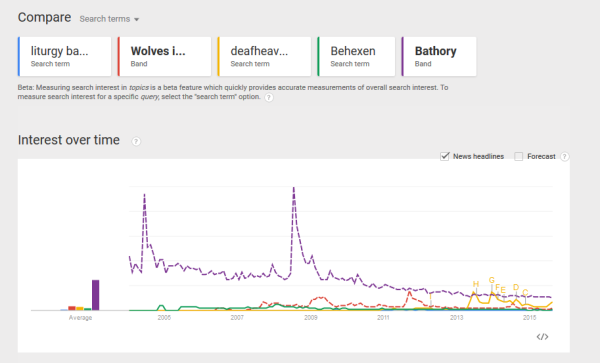
There is an experience like deja vu which feels more like parallax motion. This sensation is that of seeing parallels between two things which, visually at least, seem to have nothing in common. And yet it also feels like racing over open ground in a landscape of discovery. Consider this observation from a pipe collecting writer:
Some innovations are not innovative at all. They are ideas that have been explored–and even made–long before. That the current experimenter is ignorant of previous attempts does not make the effort novel. It also does not make revising an idea or revisiting a solution unworthy. But don’t make untrue claims. Socrates’ observation that “There is nothing new under the sun” is almost always true.
Other “innovations” are transparent attempts at attention-getting. Putting products out there that exclaim “Look at me! I’m SO leading edge! I’m an artist!” might work for Miley Cyrus, but the average pipemaker’s target audience is somewhat less naïve nor impressionable, but you wouldn’t know it by looking at some of the work being touted on Facebook pipe groups these days.
What amazes me even more is that the work on the ridiculous end of the sublime-to-ridiculous continuum attracts its champions, and they seem eager to whoop and hurrah without engaging in any critical discourse at all. It’s hype, hype, hype. In my view, hyping isn’t helpful because it inhibits thoughtful conversations that might contribute to improving or at least refining the innovations being touted.
He draws a distinction between what we might call invention, or application of new ideas to a realistic use, as distinct from novelty, which is the creation of “new” ideas for newness’ sake. In metal terms, it takes some brains and guts to create a sublime form of a metal genre, but any idiot can add ska, jazz and rockabilly to Pantera and come up with something “new.”
Metalcore in particular is consumed by this view of novelty as a target. Since its songs are built in the post-hardcore random collage style, just about anything fits into a metalcore band, which is why it has aesthetically-diverse but musically-similar acts like Animals as Leaders, Obscura, Behemoth, The Haunted and The Red Chord under the same genre banner. Each riff is like a different act in a variety show. This is why it has the “carnival music” approach: its compositional structure is verse chorus with an extended musical appositive in which the random is prized more than the coherent, or that which flows from one point to another in a sensible narrative.
Some would say this is its artistic appeal, that metalcore expresses the randomness and purposeless directionless consumption of our time. That may be true, but the best art does not merely protest, but forms beauty out of sense and makes it compelling in a new way. Others might defend metalcore as “open-minded,” as was popular with bad gimmick death metal bands in the early 1990s, and even early mathcore experiments. Yet randomness is not open-mindedness; it is refusal to make up one’s mind, and by burying the audience under different elements, essentially hiding what one thinks and hedging one’s bests. How do you criticize a band that has a riff from every imaginable style in each song, except to note that greater randomness produces greater proximity to background noise? Andy Warhol might sell metalcore as an avant garde representation of the background noise of the city.
And yet, we had two-riffs plus breakdowns bands back in the day. Metalcore itself is an extension of post-hardcore, which was a late 1980s thing. None of this “innovation” is in fact new; it is merely recycling the same old sad elements, like the clichés in movies where every rebellious character has to ride a Harley, drink Jack Daniels, smoke Reds and listen to heavy metal. Generally the pattern for metalcore bands is that they find something that people want but do not understand, then make a simplified — in this case, random — version of it, and then pimp it out. Opeth for example made their career off the idea of being too deep for most people, but were basically a re-hash of what Cemetary and Tiamat did five years before. Meshuggah took what Exhorder and Vio-lence did with speed metal riffs but made it more obvious, simplified and put it to a jazz-style complex offbeat structure, but added nothing new musically, and in fact took away most of the musicality. Cradle of Filth figured out that if someone made a heavy metal band that sounded like black metal, it would outsell the original. And so on.
Here is a useful definition regarding metalcore:
A blend of hardcore and metal music that evolved in the mid-to-late 90’s with bands like Unbroken, Earth Crisis, Harvest, Endeavor, Poison The Well and Unearth. There is a liberal use of breakdowns in the music and the lyrical themes range from the political to the personal.
Compare to a similar definition for deathcore:
Deathcore is a style of extreme music often confused by its fans with death metal. Deathcore draws heavily from the “malcore” style of metalcore in the sense that elements of its sound, both in composition and production, are rejected by the more conservative metal culture (ex. death/black/thrash/sludge metal). Deathcore differs from metalcore in the sense that it is generally faster, more heavy, and tending toward darker themes such as are present in death metal. Deathcore is also notorious for the excessive use of breakdowns, an element also present (but less frequent) in death metal and other ‘true’ metal genres. Hardcore dancing, a dance style in which fans swing their arms and legs violently in rhythm, has become hugely popular among deathcore fans, and is a trademark of live deathcore shows.
Despite many fans’ beliefs, deathcore is vastly different from traditional death metal. Musically, the deathcore song structure is generally much more formulaic than that of death metal; songs tend to have one or two guitar riffs, several breakdowns, and possibly a chorus. Deathcore composition is also much less complex, many songs featuring doubled guitar parts or simple guitar harmonies, with the bass guitar being almost entirely indistinguishable.
Our normal impulse is to say “Well, you listen to what you like, and I will listen to what I like.” That is the socially correct answer at least which is one reason why it is wrong: social preference selects for the unreal because people prefer illusion. The problem is that when idiot music shows up, idiots show up, and they outnumber anyone competent. If they can appropriate the style of your genre and make a dumbed-down sugar, salt and fat added version of it, they will replace you. You will not keep listening to what you like because no new versions of it will come out because no musician will touch a genre infested by idiots unless he or she wants to profit from idiots. Your genre will be assimilated and replaced. That is exactly what happened to metal since 1994.
Some people moan any time a person wants to connect metal with social trends, history or other traditional forms of analysis. that is because those people want to keep metal as a hobby, a product and something special removed from everything else that is just there to be enjoyed. But on the other hand, many artists have given up more comfortable lives cranking out alt-country, indie rock or rap to spend their time trying to make quality metal, and it seems pointless to disrespect and ignore that. If we look at metal through the historical development of an artistic movement, it becomes clear that it offers not just another version of the same rock ‘n’ roll idea, but an entirely different idea. Rock is, like all post-Enlightenment thought, about the primacy of the individual. Metal rebels against that with hard realism.
Perhaps the hard realism is right. After all, this society is miserable — another one of those things that metal reminds us of daily — and besotted with lies, committing ecocide against nature, forcing people into miserable jobs, and specializes in tearing down beautiful things to replace them with strip malls and endless rules. I would go so far as to say this is the worst age of humanity, except for the mindlessly selfish, who sure love that 500-channel cable and easy jobs and fast credit that make them feel like kings in the tiny little fraction of the universe that they notice. Over time I have come to observe that the smarter someone is, the more aware they are not just of particular ideas or facts but of space, area, time and their own smallness. An idiot thinks he is the sole occupant of the planet; a medium-intelligence person is aware of his community; a genius is aware of the cosmos, the past and future of humanity as a whole, and the people even far from him. Metal rebels against our society both on the basis that it is formed of affectionate-sounding lies, and that it is ugly, pointless, boring and crass.
But that is “alternative history” to the majority of people. They believe — because they want to believe — that our time is the apex of humanity. And technologically, surely it is, although most of this stuff seems like fumbly-fidgety rehashes of 1970s inventions like UNIX and networking. They ignore the vast misery not just among the impoverished, but among the successful, and the utter boredom of the purposeless nature of modern life. Every generation, social order decays further and people become more like witches, of dishonest, selfish, petty, and oblivious character. Each generation can say to the one after, “Stuff’s worse than when I was a kid, so have an iPod and we’ll call it even, OK?” As long as we stick with official history there is nothing we can do with that. As others have noted, perhaps the root of invention as opposed to novelty is a willingness to leap off the platform of official history and look into other reasons, not new but realistic and truthful instead of merely socially popular ones.
Speaking of alternative history, I encountered this passage today. You might call it Libertarians for Monarchy. It takes an economist’s view of the change in history, and shows how alternative history might have been right, after all, and how we might all just be living in denial and cruising on the wealth of the past (Hans-Hermann Hoppe via Outside In:
A king owned the territory and could hand it on to his son, and thus tried to preserve its value. A democratic ruler was and is a temporary caretaker and thus tries to maximize current government income of all sorts at the expense of capital values, and thus wastes. […] Here are some of the consequences: during the monarchical age before World War I, government expenditure as a percent of GNP was rarely higher than 5%. Since then it has typically risen to around 50%. Prior to World War I, government employment was typically less than 3% of total employment. Since then it has increased to between 15 and 20%. The monarchical age was characterized by a commodity money (gold) and the purchasing power of money gradually increased. In contrast, the democratic age is the age of paper money whose purchasing power has permanently decreased. […] Kings went deeper and deeper into debt, but at least during peacetime they typically reduced their debt load. During the democratic era government debt has increased in war and in peace to incredible heights. Real interest rates during the monarchical age had gradually fallen to somewhere around 2½%. Since then, real interest rates (nominal rates adjusted for inflation) have risen to somewhere around 5% — equal to 15th-century rates. Legislation virtually did not exist until the end of the 19th century. Today, in a single year, tens of thousands of laws and regulations are passed. Savings rates are declining instead of increasing with increasing incomes, and indicators of family disintegration and crime are moving constantly upward.
In a time when popularity determines success, appearance is more important than reality. This is what gives rise to novelty, or essentially — as our pipe smoker above reminded us — re-visiting of old ideas in bizarre new forms that entice the herd because they are different and unique, which is how all of those bonobos view themselves and want to assert as their reason for having importance. We call most of them hipsters, but the phenomenon is broader than that; we live in a time that is appearance-over-substance, and as long as metal panders to that demographic, its fortunes will not improve.
16 CommentsTags: bonobos, Heavy Metal, hipsters, innovation, invention, novelty, royalism











